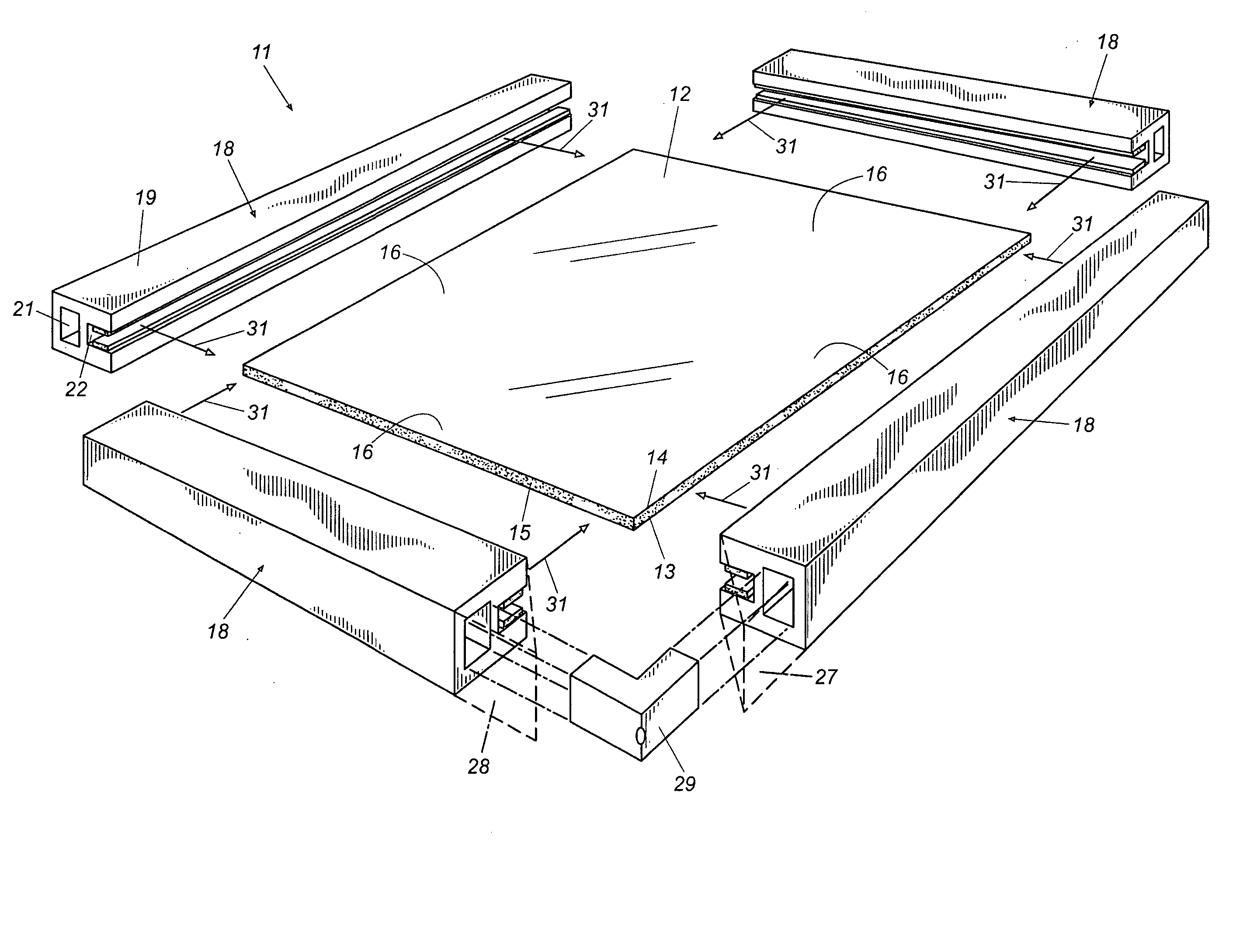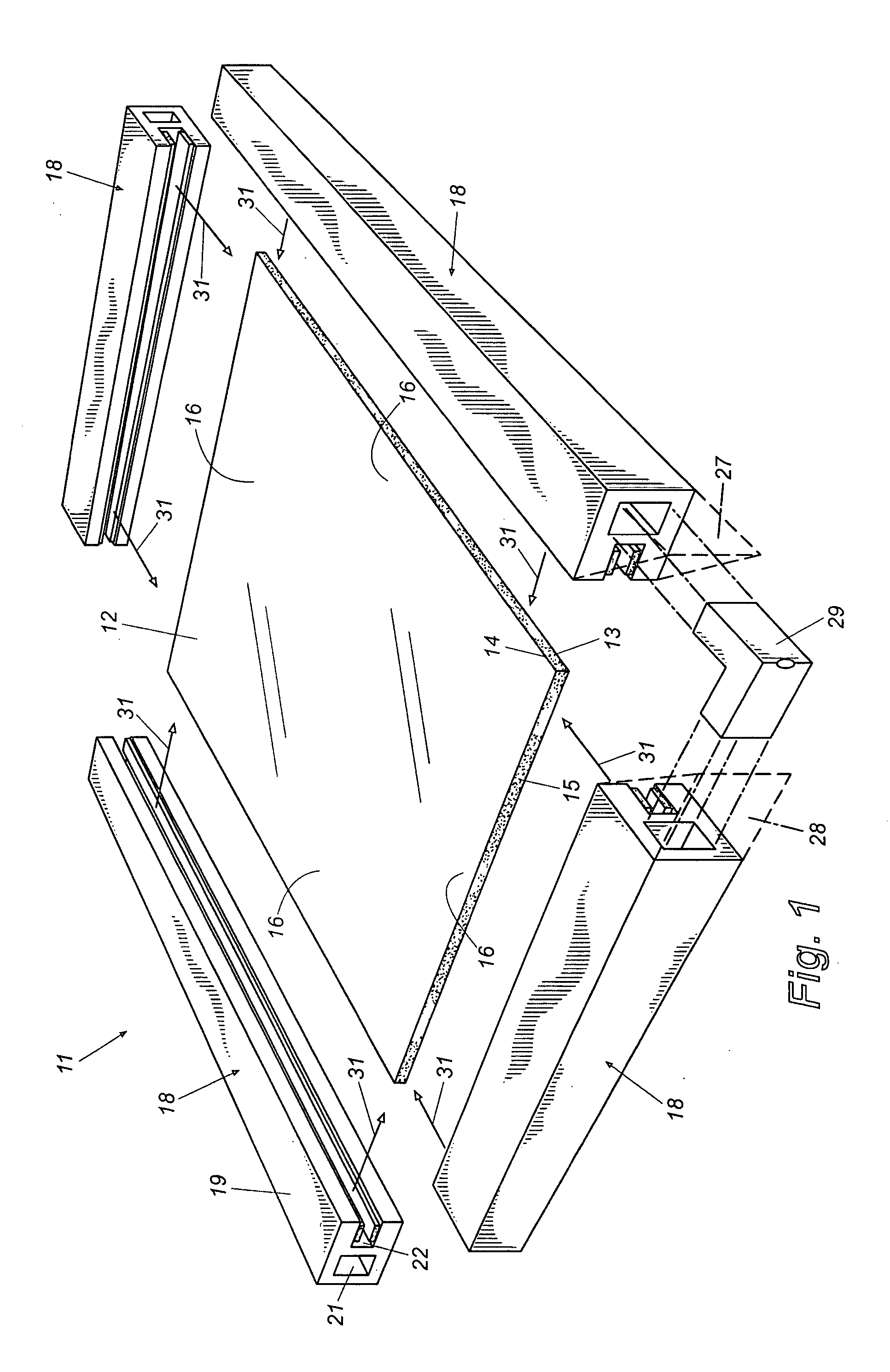Groove glazed window sash and fabrication method
- Summary
- Abstract
- Description
- Claims
- Application Information
AI Technical Summary
Benefits of technology
Problems solved by technology
Method used
Image
Examples
Embodiment Construction
[0019] Reference is now made in more detail to the drawing figures, wherein like numerals refer, where appropriate, to like parts throughout the several views. FIG. 1 is a perspective partially exploded view of a window sash assembly illustrating preferred components and method steps of the present invention. The sash assembly 11 comprises a glass unit 12 made up of two spaced panes 13 and 14 of glass separated by an insulating space, which may be filled with an appropriate gas such as argon, as is known in the art. The panes 13 and 14 of glass are maintained in their spaced apart relationship and the space between them is sealed by a spacer 15, which extends around the periphery of the glass unit between the panes. While such a dual pane insulated glass unit is preferred, it should be understood that many other types of transparent or translucent material sheets might be used within the scope of the invention. For example, the glass unit might be comprised of a single pane of glass...
PUM
| Property | Measurement | Unit |
|---|---|---|
| Adhesion strength | aaaaa | aaaaa |
| Adhesivity | aaaaa | aaaaa |
| Mechanical properties | aaaaa | aaaaa |
Abstract
Description
Claims
Application Information
 Login to View More
Login to View More - R&D
- Intellectual Property
- Life Sciences
- Materials
- Tech Scout
- Unparalleled Data Quality
- Higher Quality Content
- 60% Fewer Hallucinations
Browse by: Latest US Patents, China's latest patents, Technical Efficacy Thesaurus, Application Domain, Technology Topic, Popular Technical Reports.
© 2025 PatSnap. All rights reserved.Legal|Privacy policy|Modern Slavery Act Transparency Statement|Sitemap|About US| Contact US: help@patsnap.com



